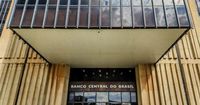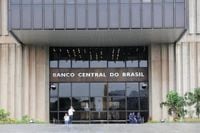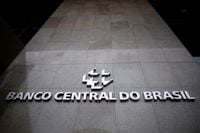On May 7, 2025, the Comitê de Política Monetária (Copom) of the Banco Central (BC) convened to determine the new level of the basic interest rate, known as the Selic. This meeting comes amid rising food and energy prices, which have significantly pressured inflation. Despite these challenges, the global economic slowdown suggests that this increase could be the last before a pause in the current monetary tightening cycle. If confirmed, this will mark the sixth consecutive increase in the Selic.
According to the most recent edition of the Boletim Focus, a weekly survey conducted by the BC among market analysts, the basic interest rate is expected to rise by 0.5 percentage points, pushing it from 14.25% to 14.75% per year. This anticipated adjustment reflects the Copom's earlier indication that any increases would be of 'smaller magnitude' following three consecutive hikes of one percentage point each.
In the statement from the last meeting held in March 2025, the Copom highlighted that while the Brazilian economy remains heated, there are ongoing international uncertainties, particularly due to the United States' trade policies. The committee did not specify future steps to be taken after the May meeting, but it emphasized the need for caution regarding a potential economic slowdown.
Market expectations are keenly focused on inflation trends. The latest Boletim Focus indicates that the estimate for the Índice Nacional de Preços ao Consumidor Amplo (IPCA), Brazil's official inflation measure, is now 5.53% for 2025, a slight decrease from 5.65% just four weeks earlier. However, this figure remains above the continuous target set by the Conselho Monetário Nacional (CMN), which is 3% for the year, with a tolerance range that allows it to reach up to 4.5%.
The Selic rate is crucial as it serves as a benchmark for other interest rates in the economy and is used in the trading of public securities within the Sistema Especial de Liquidação e Custódia (Selic). It is the primary tool employed by the Banco Central to control inflation. When the Copom raises the Selic, the intent is to cool down demand, which subsequently impacts prices as higher interest rates increase the cost of credit and encourage savings.
However, higher rates can also hinder economic growth, as they make borrowing more expensive. Beyond the Selic, banks also consider various factors such as the risk of default and operational costs when determining the rates charged to consumers. Conversely, a reduction in the Selic typically leads to lower credit costs, which can stimulate consumption and production, thus boosting economic activity but potentially lessening inflation control.
The Copom meets every 45 days. During the first day of these meetings, technical presentations are made regarding the evolution of both the Brazilian and global economies, as well as the behavior of financial markets. On the second day, the members of the Copom, which comprises the BC's board of directors, analyze possibilities and decide on the Selic rate.
As of this month, the BC has implemented a new continuous inflation target system. The central target remains at 3% annually, with a tolerance range of 1.5 percentage points above or below, thus establishing a lower limit of 1.5% and an upper limit of 4.5%. Unlike the previous model, where the target was assessed at the end of the year, the new system allows for monthly evaluations based on accumulated inflation over 12 months. For instance, the inflation rate in May 2025 will be compared to the target starting from June 2024, and this process will continue in the following months.
This dynamic approach enables a more responsive tracking of the target's adherence. In the last Inflation Report published in March, the BC maintained its forecast that the IPCA would end 2025 at 5.1%. However, this projection is subject to revision depending on the behavior of inflation and the exchange rate in the coming months, with the next report scheduled for the end of June.
As the Copom prepares to announce its decision later today, the financial community watches closely, particularly given the ongoing pressures from global economic conditions and domestic inflationary trends. The implications of this decision will resonate through the Brazilian economy, influencing everything from consumer credit to business investment strategies.
In the context of international developments, the ongoing trade war initiated by U.S. President Donald Trump continues to create uncertainty regarding how the Brazilian economy will be affected in the medium term. The Fed's policies have also been a point of focus, with expectations that the Federal Open Market Committee (FOMC) will maintain its current interest rate levels between 4.25% and 4.5% during its own meeting on the same day.
Goldman Sachs has projected the Selic to increase by 0.5 percentage points, emphasizing the importance of monitoring Brazil's basic interest rate forecasts for 2025 and 2026 due to inflation concerns. The firm noted that inflation, coupled with external macroeconomic uncertainties, keeps the door open for future adjustments. They anticipate that the Copom will not close the door on a smaller residual increase in June but will refrain from providing specific guidance regarding the next meeting.
Financial planner and CFP Jeff Patzlaff argues that the BC is likely to adopt a firmer technical stance to uphold market expectations and reinforce its institutional independence. He suggests that a new increase, even if modest, would signal vigilance and commitment to price stability, despite its potential impact on economic activity.
As the day unfolds, the financial community remains poised for the Copom's announcement, which will provide crucial insights into Brazil's monetary policy direction amid a complex economic landscape.



